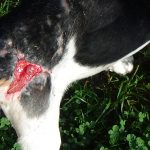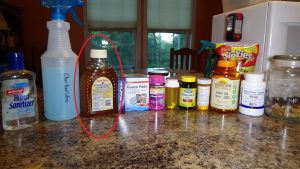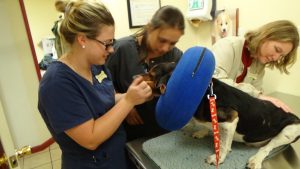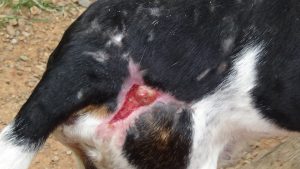
The use of honey as a topical antibiotic has a long history. In fact, it is considered one of the oldest known wound dressings. Honey was used by the ancient Greek physician Dioscorides in 50 A.D. for sunburn and infected wounds. He described honey as being “good for all rotten and hollow ulcers” [1]. Honey’s healing properties are mentioned in the Bible (Prov 24:13), Quran (16.68-69), and Torah.
Wounds infected with Pseudomonas, not responding to other treatment, have been rapidly cleared of infection using honey as a topical antibiotic, allowing successful skin grafting [4], [5].
Honey as a Topical Antibiotic?
Some of the compounds in honey kill certain bacteria and fungus. This is why honey is the one natural foodstuff that won’t spoil. No one knows how the bees do that, but we know it works. When applied to the skin, honey also serves as a barrier to moisture and keeps raw skin from sticking to dressings. Honey also provides nutrients that speed healing.
Locally-produced honeys are the most effective at killing bacteria because they are produced using the same environment you inhabit. Buy raw honey, not commercially processed honey, which has been heat treated and does not work as well. It may also contain additives that are contrary to your purpose. You can get raw honey at health food stores, farmer’s markets, and better grocery stores. Medical grade honey is also available from specialty suppliers, but is quite expensive.
How We are Using Honey
 Buddy no longer has a dressing over his wound. At least twice a day I use Chlorhexidine spray and sterile gauze squares to cleanse the open wound, removing any dog hair or grass bits that may have gotten stuck to the honey. I use lots of the spray to soften the dried honey and remove it.
Buddy no longer has a dressing over his wound. At least twice a day I use Chlorhexidine spray and sterile gauze squares to cleanse the open wound, removing any dog hair or grass bits that may have gotten stuck to the honey. I use lots of the spray to soften the dried honey and remove it.

When the wound is completely clean, I apply a glob of raw honey to a clean gauze pad and apply it to the wound, making sure I cover all parts. The amount of honey used depends on how much liquid is seeping out of the wound, which will dilute the honey. In Buddy’s case there is almost no seepage, so just enough to coat the wound will do.
With a seeping wound, a dressing would be needed to hold a larger amount of honey in place.
The honey seals the wound, preventing it from drying out, and preventing foreign bodies from getting to the exposed flesh. The honey’s antibacterial property helps prevent infection. It works well and is much less expensive than slathering in the large amounts of a medical antibiotic ointment that would be needed for a wound this size.
Buddy wears an e-collar to prevent him from licking the wound, and we are vigilant to keep the other dogs from licking it while playing. If he’s been out playing and comes in with debris on the wound, I’ll clean and dress it again to be sure we avoid infection.

I’ve not heard of this until Dr. Sandra O’Connor of Cedarwood Veterinary Hospital set this up as Buddy’s care plan. I am amazed at how well it works, and Dr. Sandra and her staff were all very pleased with his progress at his last follow-up appointment.
 The wound is closing up and new skin is beginning to grow back over the exposed tissue. We see no signs of infection. I’m happy about that!
The wound is closing up and new skin is beginning to grow back over the exposed tissue. We see no signs of infection. I’m happy about that!
Resources:
- Gunther RT. The Greek Herbal of Dioscorides. New York: Hafner, 1934 (reprinted 1959)
- World Wide Wounds
- WebMD
- Dunford C, Cooper R, Molan P. Using honey as a dressing for infected skin lesions. Nurs Times 2000; 96(14 Suppl): 7-9.
- Robson V, Ward RG, Molan PC. The use of honey in split-skin grafting. 10th Conference of the European Wound Management Association, 2000; Harrogate, UK.
- Honey Benefits, Usage, and Dosage
| If you enjoy our updates, Doggy Tales, and educational articles consider subscribing for notices when new pieces are posted. It’s painless and you can unsubscribe any time you want. Your e-mail address is used ONLY to deliver these notices. | [email-subscribers namefield=”YES” desc=”” group=”Public”] |



